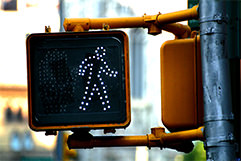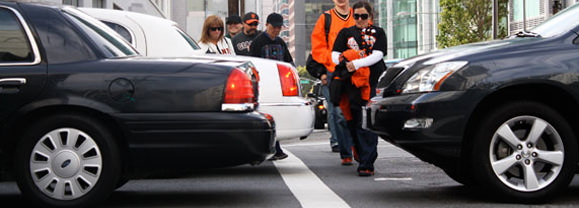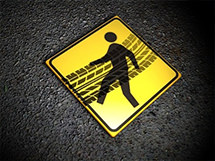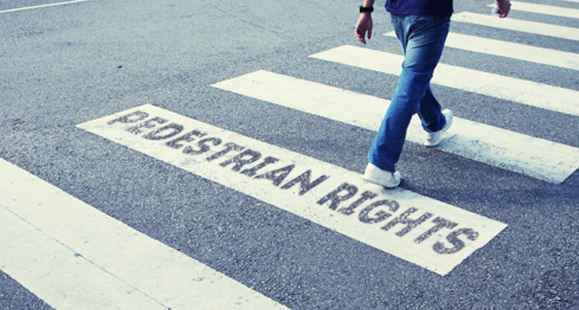Choosing to walk from one place to another is beneficial for your health and the environment. However, walking on roadways can sometimes be dangerous. In fact, the National Highway Traffic Safety Administration reports that approximately 69,000 pedestrians were injured on U.S. roadways in 2011. In addition, nearly 4,500 of the pedestrians injured ultimately died as a result of the accident. Understanding pedestrian rights can help reduce the frequency of accidents and ensure that the proper person is held accountable if and when accidents occur.
Rights of Pedestrians

State laws regarding pedestrians may vary. However, in most cases, pedestrians have the following rights when walking on the road:
- Right to cross the road in designated crosswalks.
- Right to cross the road at an intersection if no crosswalk is available.
- Right to cross the road when an electronic signal indicates pedestrian right of way.
Pedestrians always have the right of way in crosswalks with no electronic signal and at intersections where no crosswalk is available. On crosswalks with an electronic signal, pedestrians have the right of way when indicated by the signal. When pedestrians have the right of way, motorists must stop until the pedestrian has crossed safely. Motorists who fail to stop and remain stopped for pedestrians may face fines and other penalties.
Limits on Pedestrian Rights

Although pedestrians have the right of way in many different situations, this right does not relieve them of all responsibility for their own safety. For example, pedestrians have the right of way in a crosswalk, but they cannot walk out in front of a car that is already too close to stop safely. Likewise, pedestrians cannot stop in the crosswalk and prevent traffic from flowing.
Dealing with Accidents

When an accident involving a pedestrian occurs, either the driver, the pedestrian or both parties may be to blame. Because these accidents can cause bodily injury and property damage, insurance companies often get involved. In some cases, the matter may even be brought into a court of law. For this reason, it is important to learn and follow the laws governing pedestrians and vehicles in your state, both when you are walking on a roadway or interacting with pedestrians in a motor vehicle.
The information in this article was obtained from various sources. This content is offered for educational purposes only and does not represent contractual agreements, nor is it intended to replace manuals or instructions provided by the manufacturer or the advice of a qualified professional. The definitions, terms and coverage in a given policy may be different than those suggested here and such policy will be governed by the language contained therein. No warranty or appropriateness for a specific purpose is expressed or implied.

